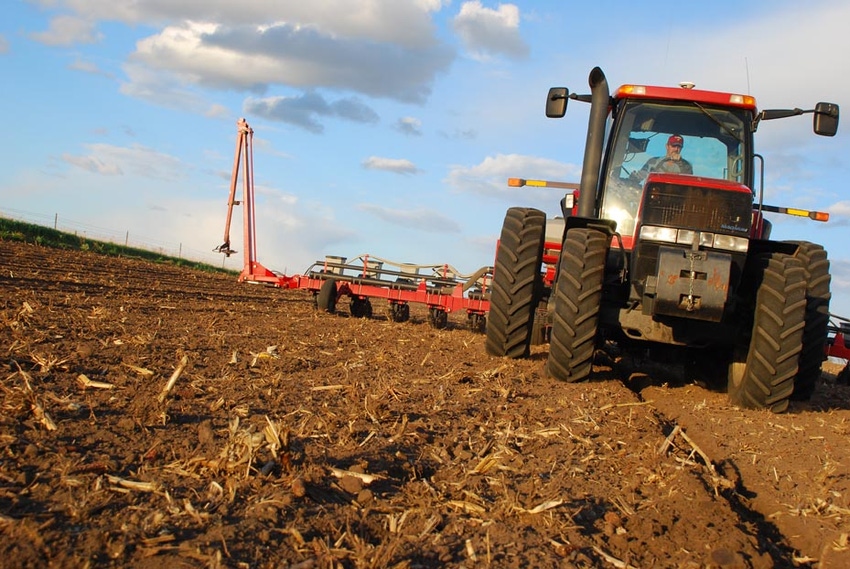March 21, 2013

Did you see what happened with new-crop December corn prices Wednesday? After a nearly 5¢ rise, they closed at $5.67. While that is a long way from the $8 corn from last August, it represents a 2¢ rise above the crop insurance guarantee of $5.65. And that is what you were waiting for to justify your investment in crop insurance. The same faith that you have in burying seed hoping it will grow, has again paid off with your crop insurance decision. So what do you do with that now?
The small rally in December corn futures on March 20 took futures to $5.67, only three trading days after the crop insurance enrollment period ended. Those who signed up for revenue protection – about 80% of Corn Belt farmers who signed up for crop insurance – have seen a quick and positive reaction from the commodity market. It allows a crop insurance policy holder to begin implementation of a marketing plan that will allow bushels of corn to be marketed without waiting until September to see if they will actually be produced.
The holder of a policy can market his crop with confidence in a time of the year when prices generally rise, and not be afraid of repercussions from a failed crop like 2012. From March 15 to harvest, your policy underwrites your marketing plan, but after harvest, your revenue protection policy no longer is responsible for your marketing decisions. This should not be taken as a recommendation to sell all of your protected corn at $5.67. It is only an observation that good things do happen to good people. Instead of selling $4 corn and being guaranteed only $5.65, you are still guaranteed $5.65 on those 80-85% of your crop and you can actually market the grain for a higher amount.
Like what you're reading? Subscribe to CSD Extra and get the latest news right to your inbox!
No, 2¢ is not worth a call to the elevator, but it indicates your marketing plan for the 2013 crop is now in effect and will need monitoring and management. Iowa State University Ag Economist Steven Johnson says it is time for the “tractor seat bounce” in the market, “A rally in the new-crop December corn futures price happens nearly every year in March and April. The December futures contract tends to move higher, and remains relatively high until at least mid-June when more is known about the planted acreage and yield prospects.”
Take Advantage of Price Rallies
Johnson is a big advocate of using your crop insurance – not as a yield guarantee, but as an opportunity to manage your revenue by taking advantage of price rallies to bolster income, “The key to RP is that if the harvest price increases (October average for December futures contracts); the revenue guarantee reflects the higher of these two prices. That’s a real advantage if there’s a shortfall of contracted insurance bushels since that higher harvest price will be reflected in the final indemnity payment.”
So how do you know prices will remain above the spring guarantee? You don’t, but Johnson says look at the history of where they have been relative to the spring and fall prices for the past dozen years.
Only in five of those 12 years is the harvest price higher than the projected price, but it is in each of the last three years. Note that for all 12 years the December corn futures price high was above the Projected Price. Only the years of 2006 and 2010 did this high not exceed the Harvest Price.
This period of time is referred to as the spring/summer high price, or the seasonal highs. Note that for all 12 years the December corn futures price high was above the projected price. Only the years of 2006 and 2010 did this high not exceed the harvest price.
Johnson says if the 2012 highs were not hit with your marketing plan, this is a new year and a new opportunity to take action. “For corn and soybeans in 2013, many missed the opportunity to sell new crop bushels last August or September at high prices. A new goal might now be to sell a portion of your guaranteed insurance bushels in the spring and summer months. Cash sales can be made using forward cash or hedge-to-arrive (HTA) contracts. Both contracts require the delivery of a specific quality and quantity of bushels. The forward cash contract fixes both the futures price and the basis when the contract is initiated, thus the cash price for delivered bushels is known.”
Summary
The corn market has moved into positive territory with regard to the crop insurance guarantee. This allows a policyholder to not only be guaranteed the minimum revenue of $5.65, but also sell corn for more than that level. This should be part of your marketing plan. In recent years, the high for December futures has been above the projected price.
Read the article at farmgateblog.com.
You might also like:
Mid-Year Soybean Stocks: Seasonal Consumption Slowdown Will Determine Prices
You May Also Like




